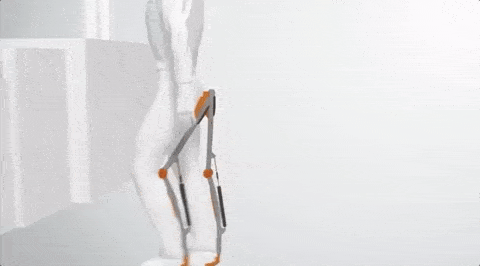We might have made them more comfortable or flashier, but if you think a bit about it, chair design hasn’t changed all that much since it was invented virtually thousands of years ago. Two brave startups, however, are challenging consumers with a redefined sitting experience. Instead of sitting on a chair, you wear one.
The two startups, Noonee from Germany and Sapetti from Switzerland, made a ‘chairless chair’ (their word choice) that looks a lot like an exoskeleton. Only instead of augmenting performance for athletes or enabling paraplegics to walk, this contraption simply allows people to sit anywhere they please since they’re no longer condition by having a sitable surface nearbout.

The chair is made from polyamide and attaches to the legs through a series of straps which lock into position once the user presses a button. Contrary to what some might think, this chair isn’t designed in mind for the lazy. Instead, it’s intended in a working environment such as in an assembly plant where workers often have to stay in an unnatural position to fasten nuts and bolt, weld, measure etc. Increasingly, automakers are optimizing their plant floor for robots and machines, which often leaves human workers — which are still valuable and needed — scrambling for a good position to perform a task. The designers of the exochair say their device will reduce worker fatigue and work-related accidents while improving productivity.
“It’s more of a tool rather than an exoskeleton,” chief designer of the ‘chairless chair’ Keith Gunura said during The Henry Ford’s TV show Innovation Nation with Mo Rocca
The chairless chair doesn’t come with any added strength seen in other exoskeleton meant for working environments. It makes up for it by being lighter, though, and uses less energy. And it’s not just assembly plants that might benefit. Gunura said he’s been approached by people from all sorts of crafts who have expressed interest from fisherman to surgeons to retail workers. “Basically anyone who’s standing for long periods of time,” he says.






